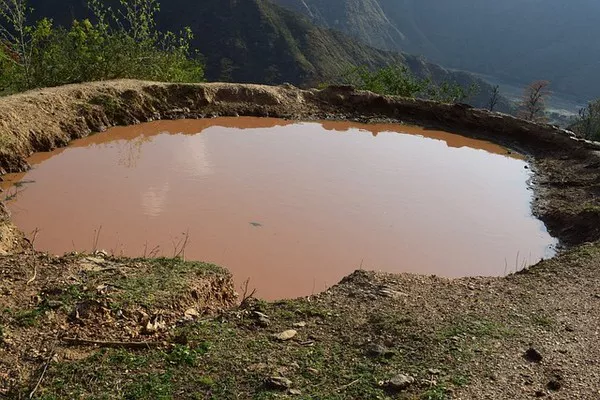In the face of escalating water scarcity and environmental concerns, the demand for innovative wastewater treatment technologies has never been more urgent. Among these, Membrane Bioreactor (MBR) technology has emerged as a powerful and efficient solution for wastewater treatment and water reclamation. By combining the principles of biological treatment with advanced membrane filtration, MBR systems offer unparalleled efficiency, flexibility, and sustainability in managing wastewater streams. This article delves into the intricacies of MBR technology, its operational principles, applications, advantages, and challenges.
Understanding Membrane Bioreactors (MBRs)
At its core, a Membrane Bioreactor system consists of a biological reactor where microorganisms break down organic pollutants present in wastewater, coupled with an integrated membrane filtration unit that separates treated water from biomass and suspended solids. This integration of biological treatment and membrane filtration allows for superior water quality outcomes compared to conventional treatment methods.
Operational Principles
The operation of an MBR system involves several key processes:
Biological Treatment: Wastewater enters the bioreactor where it undergoes biological degradation facilitated by microorganisms such as bacteria and fungi. These microorganisms metabolize organic pollutants, converting them into simpler, less harmful compounds.
Membrane Filtration: As the treated water passes through ultrafiltration or microfiltration membranes, suspended solids, bacteria, and other contaminants are physically retained. The porous nature of these membranes ensures the separation of clean water from the treated sludge.
Solids Retention: Unlike conventional wastewater treatment systems, MBRs retain a high concentration of biomass within the reactor. This enhances treatment efficiency by providing ample contact between microorganisms and wastewater constituents.
Backwashing and Cleaning: Periodically, the membranes require cleaning to remove accumulated solids and maintain permeability. Backwashing, chemical cleaning, and air scouring are common methods employed for membrane fouling mitigation.
Applications of MBR Technology
The versatility of MBR technology enables its deployment across various industrial, municipal, and decentralized wastewater treatment applications:
Municipal Wastewater Treatment: MBR systems are increasingly utilized in municipal wastewater treatment plants due to their compact footprint, high treatment efficiency, and ability to meet stringent discharge standards. They are particularly effective in areas with limited space or those requiring water reuse.
Industrial Wastewater Treatment: Industries generating high-strength or specialized wastewaters, such as food and beverage, pharmaceuticals, and petrochemicals, benefit from MBR technology’s adaptability and robust performance. MBRs can treat complex industrial effluents while minimizing environmental impact and operational costs.
Decentralized Wastewater Treatment: In remote or decentralized settings where centralized infrastructure is impractical, MBR systems offer a decentralized solution for on-site wastewater treatment. Applications range from residential communities and resorts to military bases and remote industrial facilities.
Water Reuse and Resource Recovery: MBR technology plays a crucial role in water reuse initiatives by producing high-quality effluent suitable for non-potable applications such as irrigation, industrial processes, and environmental restoration. Additionally, MBRs facilitate resource recovery through the recovery of nutrients, energy, and valuable by-products from wastewater streams.
Advantages of MBR Technology
The adoption of Membrane Bioreactor technology confers several notable advantages over conventional wastewater treatment methods:
Superior Water Quality: MBR systems consistently produce high-quality effluent with low turbidity, suspended solids, and contaminants, meeting stringent regulatory standards for discharge or reuse.
Compact Footprint: MBRs offer a significantly smaller footprint compared to conventional treatment systems, making them ideal for space-constrained or urban environments.
Process Intensification: The combination of biological treatment and membrane filtration within a single system streamlines the treatment process, reducing the need for multiple treatment steps and associated infrastructure.
Flexibility and Scalability: MBR systems are modular and scalable, allowing for easy expansion or modification to accommodate fluctuating wastewater volumes or changing treatment objectives.
Reduced Sludge Production: MBR technology minimizes sludge production by maintaining high biomass concentrations within the reactor, resulting in lower disposal costs and environmental impact.
Resilience to Fluctuating Loadings: MBRs exhibit robust performance and are capable of handling variations in influent characteristics and flow rates, ensuring consistent treatment efficacy.
Challenges and Considerations
Despite its numerous advantages, Membrane Bioreactor technology is not without challenges:
Membrane Fouling: Membrane fouling, caused by the accumulation of solids and microbial growth on membrane surfaces, remains a primary operational challenge in MBR systems. Effective fouling control strategies are essential to maintain system performance and prolong membrane lifespan.
Energy Consumption: Membrane aeration and pumping requirements contribute to the energy consumption of MBR systems. Optimizing operational parameters and exploring energy recovery options can mitigate energy-related costs and environmental impacts.
Capital and Operational Costs: While MBR technology offers long-term cost savings through reduced chemical usage, sludge disposal, and footprint requirements, the initial capital investment and ongoing operational expenses may be higher than conventional treatment alternatives.
Maintenance and System Complexity: MBR systems require regular maintenance, membrane cleaning, and monitoring to ensure optimal performance. Adequate operator training and proactive maintenance practices are crucial to minimize downtime and maximize system longevity.
See also What Causes Sewer Gas Smell In Kitchen Sink
Conclusion
Membrane Bioreactor technology represents a paradigm shift in wastewater treatment, offering unparalleled efficiency, flexibility, and sustainability in managing diverse wastewater streams. From municipal and industrial applications to decentralized settings and water reuse initiatives, MBR systems continue to drive innovation and progress in the field of wastewater management. Despite inherent challenges, ongoing research, technological advancements, and operational best practices promise to further enhance the performance and viability of MBR technology in meeting the growing global demand for clean water and environmental stewardship.

